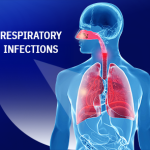Sinus Inflammation
Sinus Inflammation is one of the most bothersome modern health issues, disrupting the daily lives of many individuals. This condition occurs when the tissues and air-filled cavities located behind the nose and cheekbones become inflamed and irritated, leading to mucus buildup. These mucus-filled spaces then become ideal environments for the growth of bacteria and pathogens, ultimately resulting in Sinus Inflammation.
In this article, you’ll discover everything you need to know about Sinus Inflammation in detail.
- Causes of Sinus Inflammation
- Types of Sinus Inflammation
- Symptoms of Sinus Inflammation
- Difference Between Sinus Inflammation and Nasal Allergies
- Treatment for Sinus Inflammation
Causes of Sinus Inflammation
Sinus Inflammation commonly arises from an infection in the nasal passages, causing the thin mucous membranes lining the four sinus cavities to become irritated and inflamed. This leads to fluid accumulation inside the sinuses. The primary cause of the infection is usually viral, especially frequent colds. However, several other health issues increase the risk of developing Sinus Inflammation , such as:
- Deviated nasal septum
- Nasal polyps
- Constant exposure to polluted air or smoke
Types of Sinus Inflammation

Sinusitis can be classified based on the duration and underlying cause into the following categories:
1. Acute Sinusitis
This type occurs suddenly due to viral infections or seasonal allergies. Symptoms are similar to a common cold and include nasal congestion, a runny nose, and mucus buildup. Acute sinusitis typically lasts for about 10 days and often resolves with basic medications. In some cases, it may persist for 2 to 4 weeks.
2. Subacute Sinusitis
Triggered by bacterial infections, allergies, or neglecting to treat acute sinusitis properly, this type lasts between 4 and 12 weeks.
3. Chronic Sinusitis
As the name implies, chronic sinusitis lasts for more than 3 months and often persists despite treatment. A person is considered to have chronic sinusitis if the symptoms recur more than three times per year. Common causes include bacterial infections, asthma, and nasal polyps.
Symptoms of Sinus Inflammation
Many individuals with sinusitis experience a range of common symptoms. The most recognizable sign is sinus headache, which involves pain or pressure around the eyes, nose, cheeks, or forehead. This pain typically worsens when leaning forward or lying down. Other symptoms include:
- Sore throat
- Thick yellow or green nasal discharge
- Bad breath
- Facial pain and pressure
- Decreased sense of smell
- Cough and nasal blockage
- Ear pressure
- Fever
- Toothache
Difference Between Sinus Inflammation and Nasal Allergies
People often confuse sinusitis with nasal allergies due to their overlapping symptoms. However, they differ in cause and certain signs. While sinusitis is usually caused by infection, allergies result from an immune system reaction to foreign substances like dust, pollen, or pet dander. This reaction triggers the release of chemicals like histamine.
Symptoms of nasal allergies that help distinguish them from sinusitis include:
- Itchy skin
- Red, watery eyes
- Clear, thin nasal discharge
- Sudden onset of symptoms upon exposure to allergens
These allergy symptoms typically resolve quickly after the allergen is removed, unlike sinusitis, which tends to linger and may worsen without treatment.
Treatment for Sinus Inflammation
Treatment options for sinusitis vary based on its type and the severity of symptoms. For bacterial sinusitis, antibiotics are often prescribed. For viral cases, the focus is on rest and fluid intake. Ultimately, the correct treatment depends on a physician’s diagnosis and assessment.
If you’re experiencing any of the symptoms described above, don’t delay seeking professional medical advice. Early intervention can prevent the progression to chronic sinusitis and help you return to a symptom-free life.







